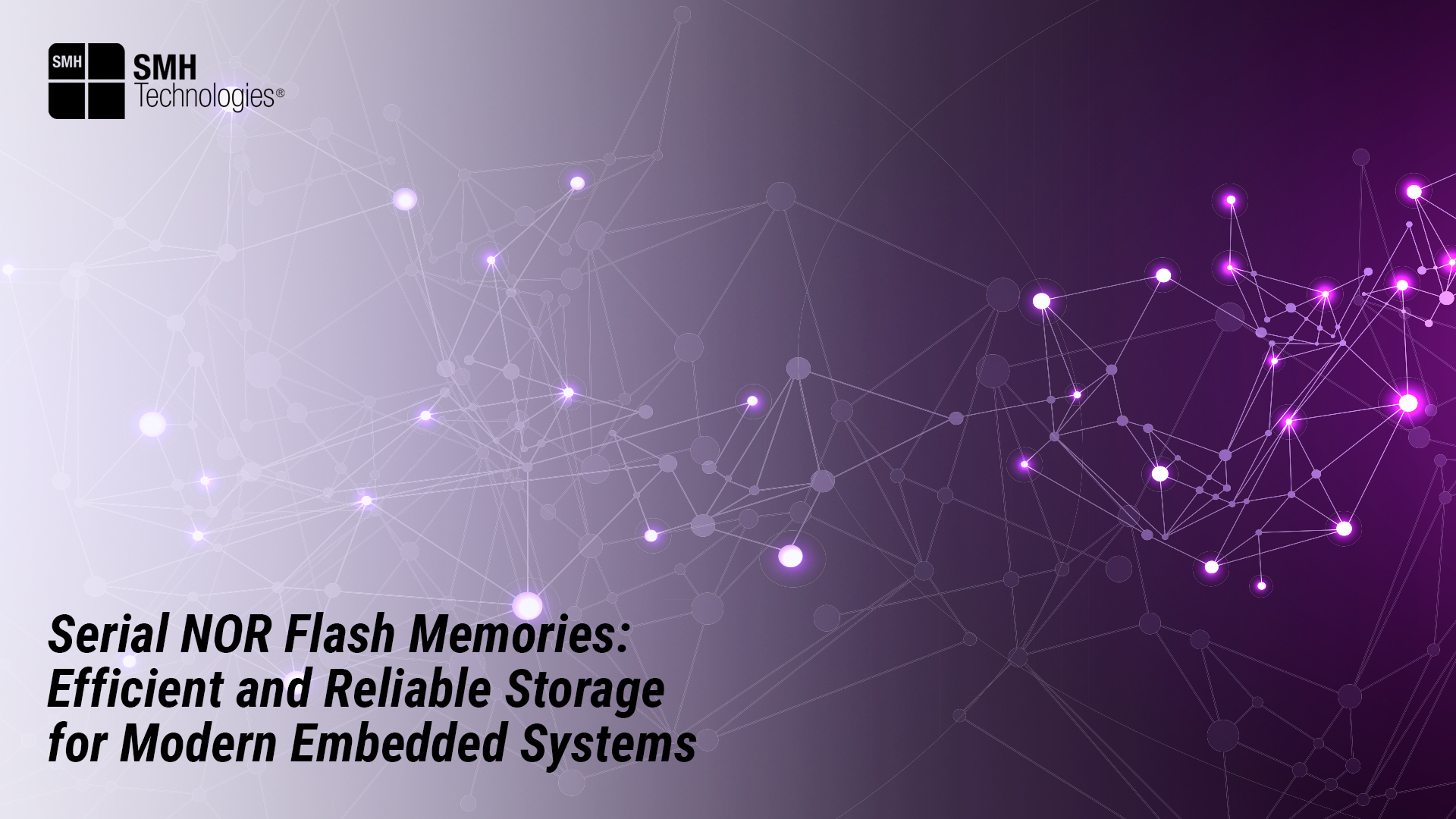Project Description
Serial NOR Flash Memories are an excellent choice for systems requiring robust performance in compact form factors. Unlike their parallel counterparts, Serial NOR Flash Memories use a serial interface, such as SPI (Serial Peripheral Interface), which reduces the number of required pins and simplifies circuit board design, making them ideal for space-constrained environments.
These memory devices are particularly suited for storing firmware, configuration data, and other essential code that needs to be quickly and reliably accessed by the system. The simplicity and efficiency of the serial interface also contribute to lower power consumption, which is critical in battery-powered and portable devices.
In a previous article we discussed about Parallel NOR Flash Memories, here we discuss about the different serial communication interfaces and types of Serial NOR Flash Memories.
SPI/QUAD-SPI/OCTO-SPI Flash Memories
SPI (Serial Peripheral Interface), Quad-SPI, and Octo-SPI flash memories are types of non-volatile storage that differ mainly in their data transfer speeds and pin configurations.
–SPI flash memory uses a single data line for communication, offering a balance between performance and simplicity.
–Quad-SPI enhances this by using four data lines, significantly increasing the data transfer rate and improving performance for more demanding applications.
–Octo-SPI, or Octal-SPI, further expands this concept by using eight data lines, providing the highest data transfer speeds and efficiency, ideal for applications requiring rapid access to large amounts of data.
Macronix’s Serial NOR Flash memories
Macronix offers a comprehensive range of Serial NOR Flash products, including 3V, 2.5V, and 1.8V options with densities from 512Kb to 2Gb. Their portfolio also includes the backward-compatible, high-performance MXSMIO® (Multi-I/O) family and the MXSMIO® Duplex (DTR) family, designed for enhanced speed and performance.
To explore the full details and benefits of these innovative flash memory solutions, visit the Macronix Serial NOR Flash product page: https://www.mxic.com.tw/en-us/products/NOR-Flash/Serial-NOR-Flash/Pages/default.aspx
These flash memory types are widely used in embedded systems, consumer electronics, and industrial applications where high performance and reliability are crucial.
Winbond’s SpiFlash® Memories
Winbond’s W25X and W25Q SpiFlash® Multi-I/O Memories offer high performance with the
popular Serial Peripheral Interface (SPI) and a range of densities from 512K-bit to 512M-bit.
The W25X family supports Dual-SPI, effectively doubling the clock rates of standard SPI. The W25Q family, an enhanced version of the W25X, features Dual-I/O and Quad-I/O SPI for even greater performance, achieving clock rates up to 104MHz, equivalent to 416MHz (50M-Byte/S transfer rate) in Quad-SPI mode.
In addition to their high performance, Winbond’s TS16949 certified and AEC-Q100 qualified
memories now support automotive applications, ensuring reliability and robustness in demanding
environments. Continue reading on Winbond’s product page: https://www.winbond.com/hq/product/code-storage-flash-memory/serial-nor-flash
Micron’s Xccela™ Octal SPI NOR flash memory
Current system bus interfaces often result in a tradeoff between performance and footprint: either the high performance of a high pin-count parallel interface or the small active signal footprint of a serial interface.
This innovative technology combines the advantages of both serial NOR flash and parallel NOR flash, allowing system designers to achieve high performance without compromising on low pin counts. In its first iteration, the Xccela Bus is an a high-speed, high-performance Octal SPI bus that uses eight data lines for command and data transfer.
The bus is synchronous and supports both single-transfer rate (STR) operation, where one byte of data is transferred every clock cycle, and dual-data rate (DDR) operation, where two bytes of data are transferred every clock cycle.
The DDR operation requires the use of a data strobe signal (DQS). The Xccela Bus supports clock frequencies up to 200 MHz and data transfer rates up to 400 MB/sec (3.2 Gb/sec).



